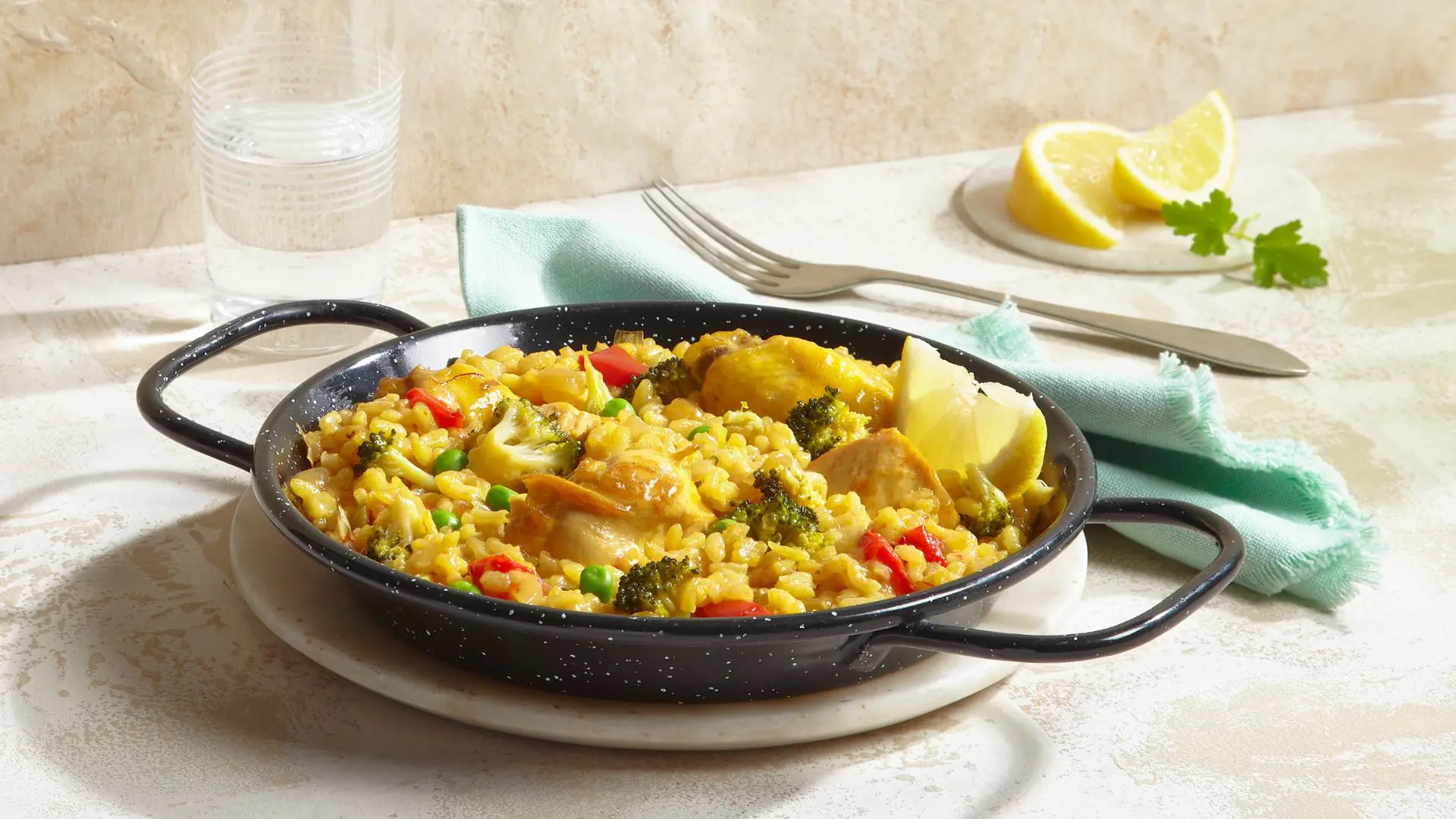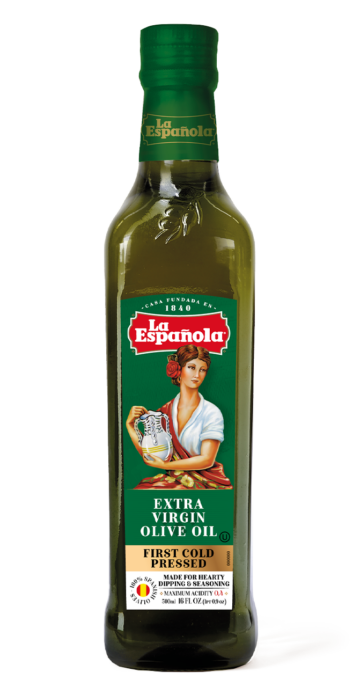A Modern Twist on a Spanish Classic
Paella is one of Spain’s most iconic dishes, celebrated for its vibrant flavors and communal preparation. While the traditional recipe often includes seafood, this Chicken, Broccoli, and Red Pepper Paella offers a more accessible, family-friendly version that still captures the essence of this Mediterranean classic.
The Role of Olive Oil in Perfecting Paella: Why Olive Oil Matters
Olive oil is a cornerstone of Spanish cuisine and plays a pivotal role in creating an authentic paella. It is used not only to sauté the ingredients but also to infuse the dish with richness and depth of flavor.
Benefits of Using La Española Olive Oil:
1. High Smoke Point: Ideal for browning chicken and sautéing vegetables.
2. Rich flavor: Its fruity, peppery notes enhance the natural flavors of the chicken and vegetables.
3. Healthier Cooking: Olive oil is packed with heart-healthy fats and antioxidants, making it a nutritious choice for this dish.
Key Ingredients and Tips for Success
Choosing the Right Rice
For authentic paella, short-grain rice like Bomba or Arborio is essential. These varieties absorb the liquid and flavors without becoming mushy, delivering the perfect texture.
Saffron: The Soul of Paella
Saffron threads add a delicate, floral aroma and the signature golden hue to paella. If saffron is unavailable, a high-quality paella coloring or turmeric can be used as a substitute.
Cooking the Perfect Broccoli
To maintain the vibrant green color and slight crunch of broccoli, ensure it is added during the rice cooking stage and not earlier. This prevents overcooking and preserves its nutrients.
The Role of Lemon
Lemon wedges serve as more than just a garnish. A squeeze of fresh lemon juice brightens the dish and balances the rich, savory flavors of the paella.
Cooking Techniques for Authentic Paella
1. Use a Wide, Shallow Pan
A proper paella pan ensures even cooking by allowing the rice to spread out in a thin layer. If you don’t have one, a large, wide skillet works well as a substitute.
2. Avoid Stirring
Once the rice is added to the broth, resist the urge to stir. This allows a crust, known as socarrat, to form at the bottom of the pan—a highly prized feature of a great paella.
3. Rest Before Serving
Letting the paella rest for a few minutes after cooking allows the flavors to meld and ensures the rice has absorbed any remaining liquid.
Customizing Your Chicken Paella
- Add More Vegetables: Enhance the nutritional value of your paella by incorporating other vegetables like zucchini, mushrooms, or artichoke hearts.
- Swap Proteins: Replace chicken with turkey, rabbit, or even tofu for a vegetarian alternative. For a seafood twist, add shrimp or mussels alongside the chicken.
- Spice It Up: For a spicier variation, sprinkle smoked paprika or chili flakes into the sautéed vegetables.
Leftovers
Paella tastes even better the next day! Store leftovers in an airtight container in the refrigerator for up to 2 days. Reheat gently in a skillet with a splash of chicken stock to prevent dryness.
Building Your Repertoire of Spanish Recipes
If you’re interested in trying out our Paella recipe, then it’s safe to assume you’re keen on Spanish cuisine. Whether you’re planning on hosting a Spanish-themed dinner party, or simply want to expand your repertoire of Spanish recipes, we’ve got just the recipes for you. Our Salmorejo recipe is a refreshing summer recipe hailing from the Andalusian city of Cordoba. Similar to Gazpacho, it’s a cold tomato soup served as an appetizer or light lunch. Garnished with La Española Organic Extra Virgin Olive Oil, few dishes are more emblematic of Spanish cuisine than this Salmorejo.
For a heartier option, try our Croquetasrecipe. Crunchy and satisfying, the filling for this versatile recipe can be adapted to suit your tastes.
For more recipe inspiration and cooking tips, be sure to check out our blog.

